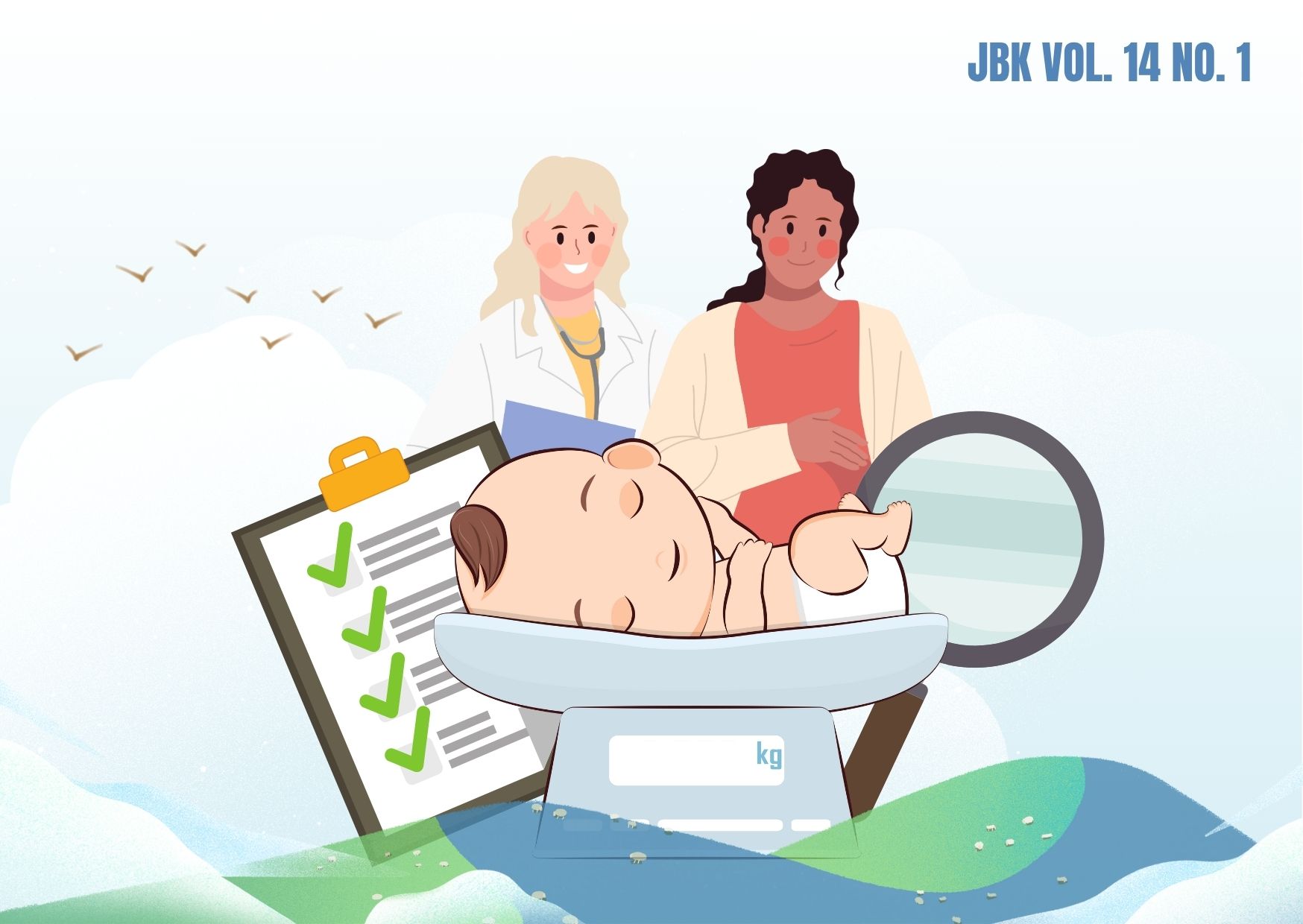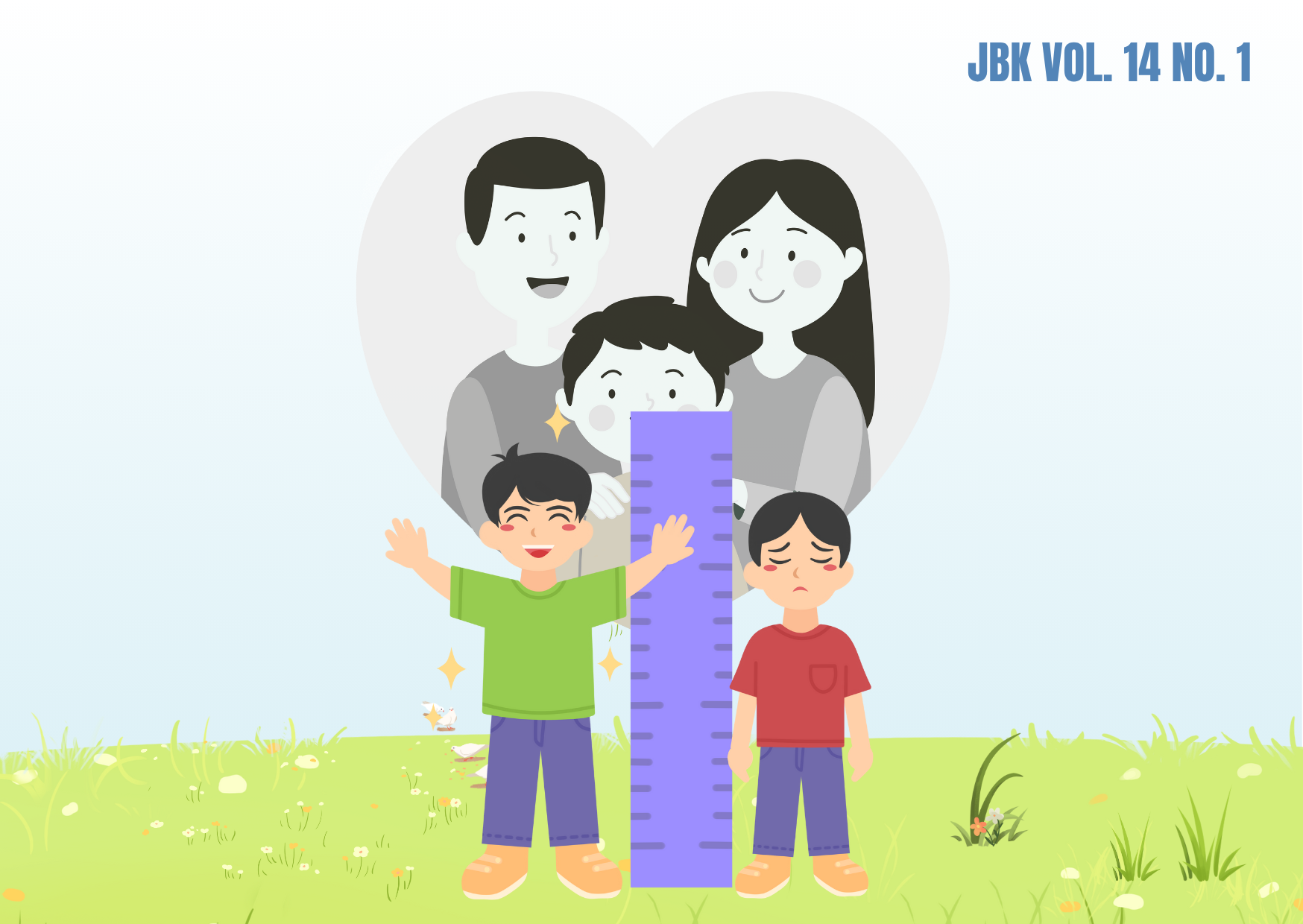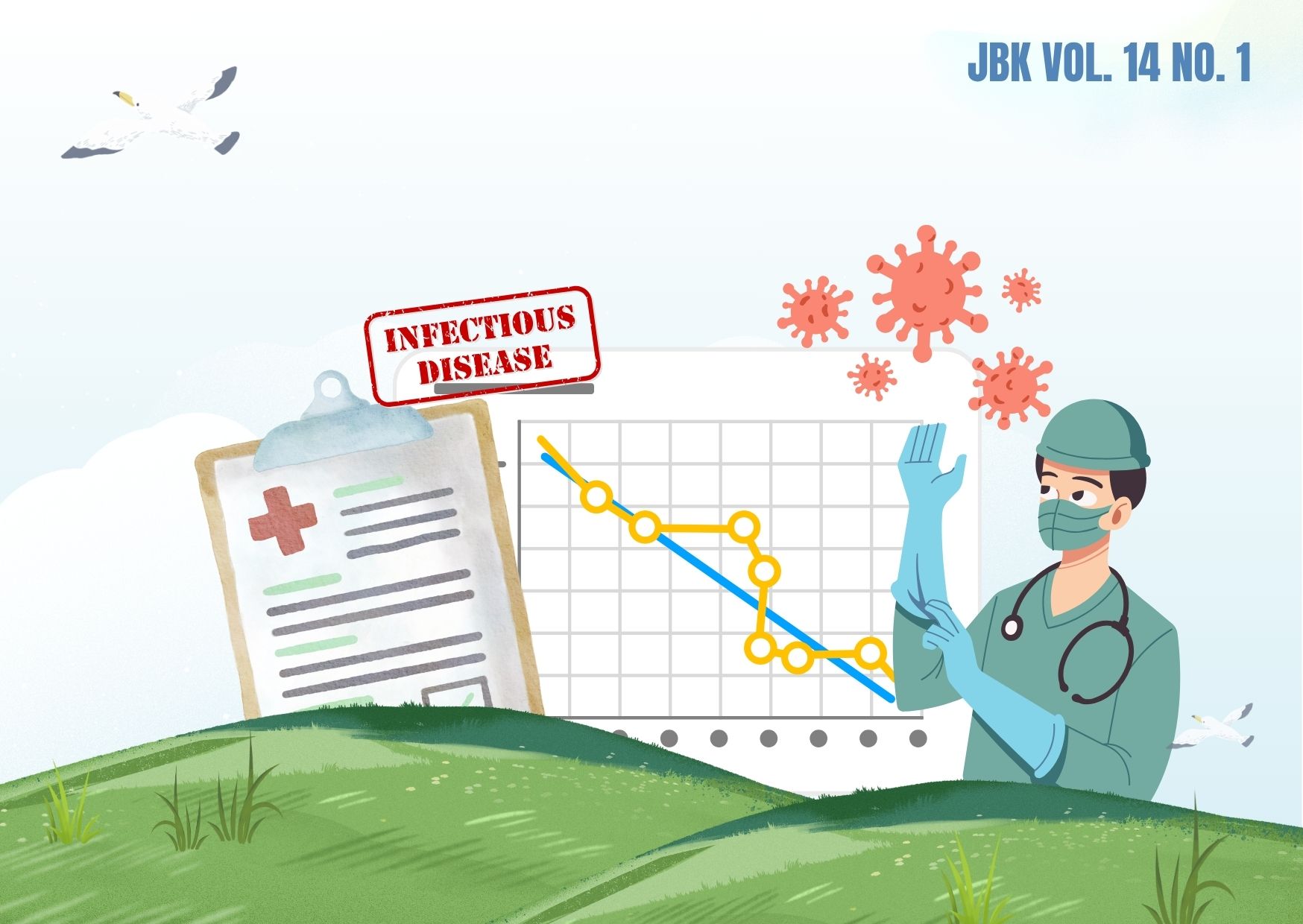FACTORS OF TUBAL LIGATION USE FOR AGE LESS THAN FORTY IN URBAN AREAS OF PANGKALPINANG, BANGKA BELITUNG PROVINCE, INDONESIA

Downloads
Tubal ligation is a long-term contraceptive and relatively non-adverse, but the problem is that fecundity return surgery for couples who want to change plans to add more children cannot be guaranteed and the cost is very expensive. The research aims to analyze the factors that influence tubectomy contraception for acceptors aged less than 40 years in Pangkalpinang City in 2016. The research type was explanatory with a cross-sectional design. The sample was tubectomy contraceptive acceptors of 95 people. Data analysis was performed using a Chi-square test to determine the relationship between variables. The results showed there was no relationship between maternal education (p=0.512), husband's education (p=0.802), maternal job (p=0.522), parity (p=0.533), knowledge (p=0.484), and support from their husband (p=0.622) with tubectomy less than 40 years of age. The reasons for tubectomy that are most often cited are related to health factors and family factors/number of children. Almost all respondents (98%) stated that they were satisfied after having a tubectomy seen from several factors including the reasons underlying the desire for tubectomy, the amount of support, the attitude, and role of the husband, support from the family, community, and role models, and easy access to costs and places to get tubectomy health services.
Population Reference Bureau. 2020 World Population Data. Available from: https://www.prb.org/2020-world-population-data-sheet/
Central Bureau of Statistics, National Population and Family Planning Board, U.S. Agency for International Development / USAID. Survei Demografi dan Kesehatan Indonesia (SDKI). Jakarta; 2017. Available from: https://eprints.latbangdjogja.web.id /
Health Information and Data Center. Pusdatin Performance Report. Jakarta; 2016. Available from: https://pusdatin.kemkes.go.id/
Central Bureau of Statistics. Statistik Indonesia 2019. Jakarta: BPS-Statistics Indonesia; 2019. Available from: https://www.bps.go.id/
Rismawati S. Unmet Need: Tantangan Program Keluarga Berencana Menghadapi Ledakan Penduduk Tahun 2030. Univ Padjajaran. 2014; Available from: http://pustaka.unpad.ac.id/wp-content/uploads/2014/10/ARTIKEL-UNMET-NEED.pdf
Purwoastuti E, Walyani ES. Panduan Materi Kesehatan Reproduksi & Keluarga Berencana [Internet]. Yogyakarta: Pustaka Baru Press; 2015. Available from: http://r2kn.litbang.kemkes.go.id:8080/handle/123456789/75294
Sulistyawati A. Pelayanan Keluarga Berencana. Jakarta: Salemba Medika; 2011.
National Population and Family Planning Board. Laporan Umpan Balik Pelayanan Kontrasepsi. Jakarta; 2013. Available from: https://www.bkkbn.go.id/
National Population and Family Planning Board. Buku Panduan Praktis Pelayanan Kontrasepsi. Jakarta: PT Bina Pustaka Sarwono Prawirohardjo; 2011. Available from: https://www.bkkbn.go.id/
National Population and Family Planning Board. Laporan Tahunan KB Provinsi Kepulauan Bangka Belitung. Pangkalpinang; 2015. Available from: https://www.bkkbn.go.id/
National Population and Family Planning Board Kepulauan Bangka Belitung Province. Pengendalian Lapangan dan Pelayanan Kontrasepsi. Bangka Belitung; 2016. Available from: https://docplayer.info/32756097-Laporan-umpan-balik-pengendalian-lapangan-pelayanan-kontrasepsi-juni-2016.html
Herlinawati, Fitria M, Santosa H. Faktor-Faktor yang Berhubungan dengan Pemakaian Kontrasepsi Tubektomi pada Wanita Pasangan Usia Subur di RSUD Dr Pirngadi Medan. J Nutr Reprod Heal Epidemiol. 2012;2(3):1–10. Available from: https://jurnal.usu.ac.id/index.php/gkre/article/view/3642
Grestasari LE. Hubungan antara Tingkat Pendidikan, Pengetahuan, Usia Ibu PUS dengan Pemilihan Jenis Kontrasepsi di Desa Jetak Kecamatan Sidoharjo Kabupaten Sragen. Skripsi. 2014; Available from: http://eprints.ums.ac.id/32140/
Lestari H, Yusniarita, Patroni R. Faktor-Faktor yang Mempengaruhi Pemilihan Kontrasepsi Metode Operatif Wanita (MOW). J Media Kesehat. 2015;8(1):37–44. Available from: http://repository.poltekkesbengkulu.ac.id/398/4/Artikel28MOW%29.pdf
Pratiwi A, Rahmah NN. Faktor-Faktor yang Berhubungan dengan Pemilihan Kontrasepsi Tubektomi Pada Pasangan Usia Subur. J 'Aisyiyah Med. 2020;5(1):183–95. doi: https://doi.org/10.36729/jam.v5i1.324
Astuti D, Ilyas H. Faktor-Faktor yang Berhubungan dengan Pemilihan Alat Kontrasepsi Suntik. J Ilm Keperawatan Sai Betik. 2015;11(2):233–43. Available from: http://www.ejurnal.poltekkes-tjk.ac.id/index.php/JKEP/article/view/577
Septiwiyarsi S. Analisis Faktor yang Mempengaruhi Pemilihan Kontrasepsi Metode Operatif Wanita (MOW) di Rumah Sakit Muhammadiyah Palembang Tahun 2016. Sci J [Internet]. 2017;6(2):170–182. Available from: https://garuda.kemdikbud.go.id/documents/detail/870016
Dewi PS. Hubungan Usia dan Paritas dengan Penggunaan Metode Kontrasepsi Jangka Panjang pada Akseptor Baru di Puskesmas Lendah 1 Kulon Progo Yogyakarta. Skripsi. 2017; Available from: http://digilib.unisayogya.ac.id/id/eprint/2825
Hartanto, Hanafi. Keluarga Berencana dan Kontrasepsi. Jakarta: Pustaka Sinar Harapan; 2010. Available from: https://www.belbuk.com/keluarga-berencana-dan-kontrasepsi-kb-p-21882.html
Lapau B. Metode Penelitian Kesehatan. Jakarta: Yayasan Pustaka Obor Indonesia; 2013. Available from: http://obor.or.id/metode-penelitian-kesehatan-edisi-revisi
Nuryati S, Fitria D. Pengaruh Faktor Internal dan Eksternal terhadap Pemilihan Alat Kontrasepsi pada Akseptor KB Baru di Kabupaten Bogor. J Ilm Kesehat Diagnosis. 2014;5(5):632–8. Available from: http://ejournal.stikesnh.ac.id/index.php/jikd/article/view/217
Rahman Z, Kunoli FJ, Amalinda F. Faktor-Faktor yang Berhubungan dengan Penggunaan Kontrasepsi Metode Operasi Wanita (MOW). Promot J Kesehat Masy. 2017;7(2):153–7. doi: https://doi.org/10.31934/promotif.v7i2.89
Rahmania D. Beberapa Faktor yang Berhubungan dengan Pemilihan Kontrasepsi Metode Operatif Wanita (MOW) pada Akseptor Keluarga Berencana (KB) di Desa Bejalen Kecamatan Ambarawa Kabupaten Semarang. Skripsi. 2014; Available from: https://adoc.pub/queue/dwiana-rahmania-program-studi-diploma-iv-kebidanan-stikes-ng.html
Copyright (c) 2022 Jurnal Biometrika dan Kependudukan

This work is licensed under a Creative Commons Attribution-NonCommercial-ShareAlike 4.0 International License.
Copyright©2022 Jurnal Biometrika dan Kependudukan (Journal of Biometrics and Population)
This work is licensed under a Creative Commons Attribution-NonCommercial-ShareAlike 4.0 International License.
1. Copyright of all journal manuscripts is held by the Jurnal Biometrika dan Kependudukan.
2. Formal legal provisions to access digital articles of the electronic journals are subject to the provision of the Creative Commons Attribution-ShareAlike license (CC BY-NC-SA), which means that Jurnal Kesehatan Biometrika dan Kependudukan to keep, transfer media/format, manage in the form of databases, maintain, and publish articles.
3. Published manuscripts both printed and electronic are open access for educational, research, and library purposes. Additionally, the editorial board is not responsible for any violations of copyright law.



































